- 01.0Cover
- 01.1Geologic Time SpiralLisa Hall
- 01.2How to Read this Broadsheet
- 01.3How to Graft a CityShannon Mattern
- 01.4IntersectionsMorris Lum
- 01.5Climate Change: An Unprecedentedly Old CatastropheKyle Powys Whyte
- 01.6The LEAP ManifestoLEAP
- 01.7Decolonizing the AnthropoceneHeather Davis, Zoe Todd
- 01.8This, Seeded in a GlanceJulie Joosten
- 01.9Tree Permit TP-2016-00332Kika Thorne
- 01.10Prosthetic CarapaceAmanda Boetzkes
- 01.11Pollution is ColonialismEndocrine Disruptors Action Group, Civic Laboratory for Environmental Action Research
- 01.12What is The Economy?D.T. Cochrane
- 01.13Serpentine GalleriesFraser McCallum
- 01.14Credit Valley Conservation Authority: Nature/Culture/NatureAndrea Olive
- 01.15Learning from Natural Assets
The Climate Change Project, City of Mississauga
- 01.16Local Useful Knowledge: Resources, Research, Initiatives
- 01.17Glossary
Intersections
- Morris Lum
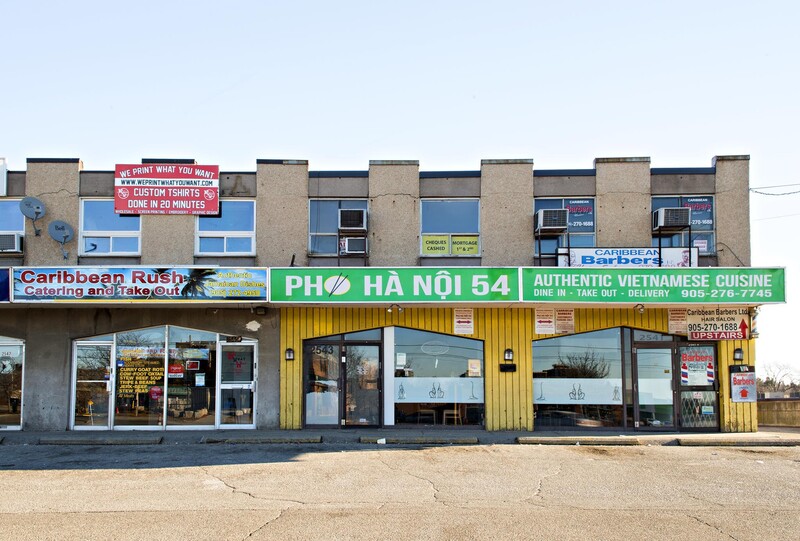
Morris Lum has been visiting Cooksville since his childhood, when he would come to buy Caribbean and Chinese groceries with his family. Reflecting on his family history, he notes the importance of this neighbourhood to newcomer communities—a fact that is shown in census data, which indicate that almost seventy percent of the ward’s residents were born outside Canada. With the construction of light rail on Hurontario Street, increased attention to Cooksville Creek amid recent flooding, and renewed belief in the possibilities of apartment towers, Cooksville is changing.
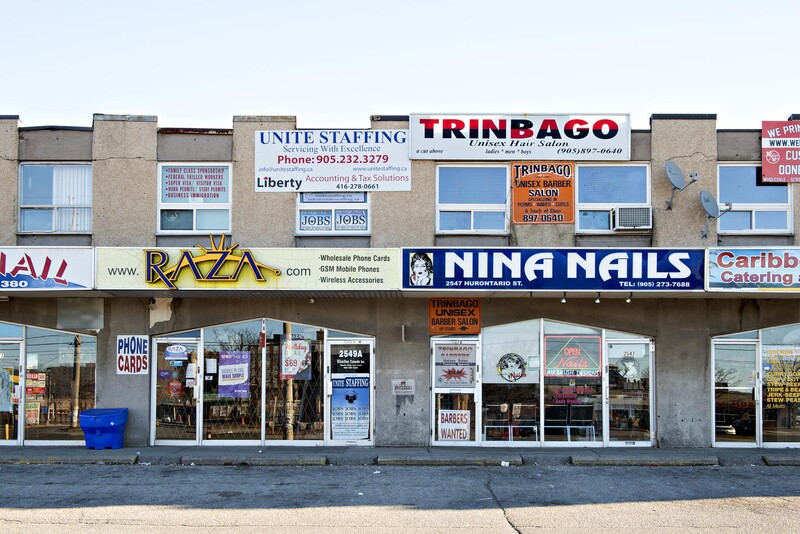
The layered character of commercial signage is a common thread throughout Cooksville, where nearly 600 businesses compete for attention in one of Mississauga’s densest wards. Nature scenes depicting tropical beaches or sunrises appear throughout, while Cooksville’s built environment is itself periodically vulnerable to the natural floodplain on which it sits.
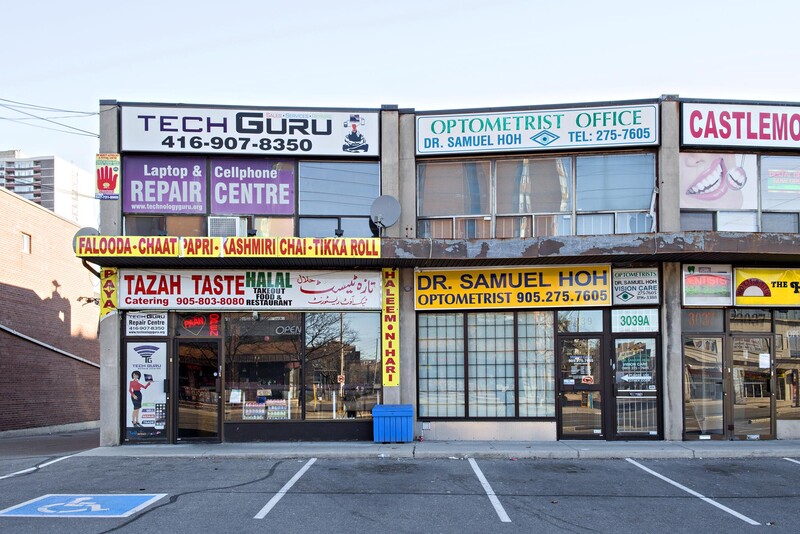
Cooksville’s restaurant culture shows how intercultural exchange is expressed through food: regional cuisines change and evolve to reflect the movement of people, ingredients, and influences. These intercultural relationships are often touted as prime examples of Canadian multiculturalism, a discourse that celebrates diversity but sometimes flattens or obscures the more difficult realities of migration and upheaval (war, political instability, economic necessity, encounters with overt and institutionalized racism in Canada, and linguistic and cultural isolation). Cooksville’s restaurant culture paints a complex picture of change, hybridity, and resilience—rejecting the notion that cultures are static, and attesting to a wide range of histories that inform the community’s present shape.
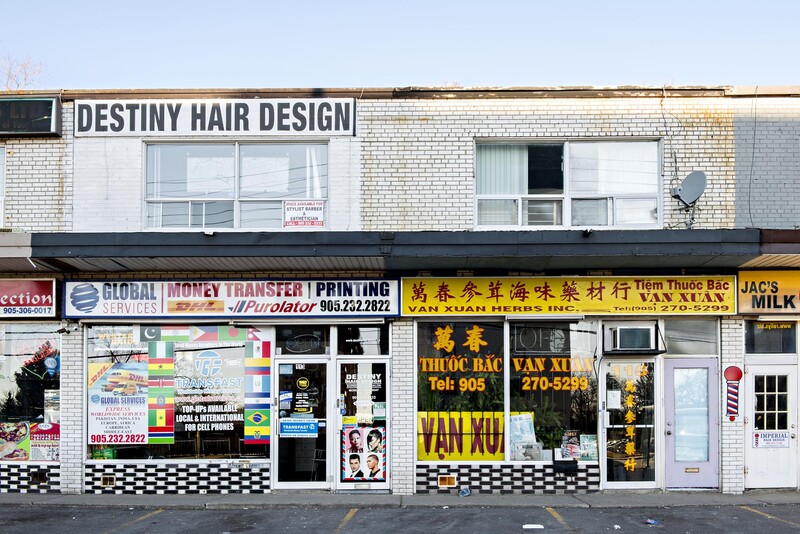
Sites of global money transfer services are indicated by the flags seen on the left. While flags are at home amid the bright colours of commercial signage, they also indicate the international scope of familial connections in Cooksville. Money links homelands here and abroad; it moves transnationally, changing shape along the way through currency exchange.
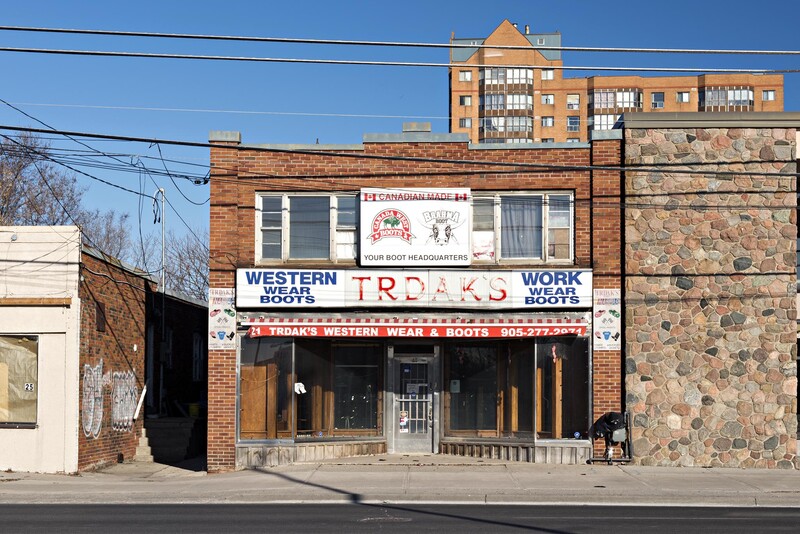
The street-facing low-rise buildings along Cooksville’s roads are complemented by high-rise apartment towers nearby, as seen above. Over 2,000 of these towers were built in the Greater Golden Horseshoe from the post-war period through the mid-1980s, and they are increasingly being seen as important in the fight against climate change. Public and private sector specialists, as well as NGOs, are working to modernize the energy efficiency of these buildings, aiming at greenhouse-gas reductions of up to forty percent. Emissions reductions are one facet of the Tower Renewal Project, which also aims to revitalize the green spaces around apartments, foster urban agriculture, and leverage financial instruments to incentivize landlord participation.
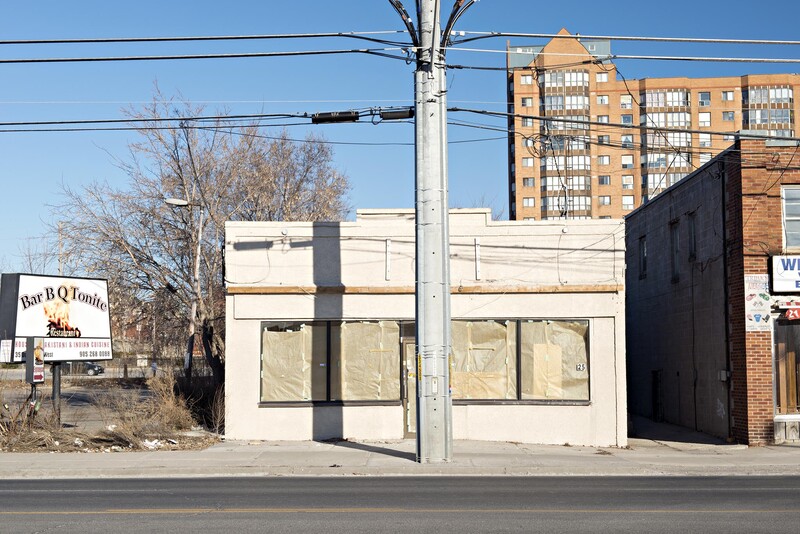
Empty storefronts are emblematic of a neighbourhood in transition, where people and businesses are in frequent movement. In Cooksville, newcomers tend to stay for just one to five years, and home-ownership is lower than the Mississauga average. Nearby, on both sides of Cooksville Creek, vacancies of a different kind are occurring: the City of Mississauga is attempting to purchase homes to create thirty acres of parkland on the creek’s floodplain. Recent floods attest to the volatility of urban rivers: the 2009 flood of Cooksville Creek registered the highest streamflow rate ever recorded in Canada.
Morris Lum is a Trinidadian-born artist, photographer, and educator whose work explores the hybrid nature of the Chinese-Canadian community through photography and documentary practices. Morris received his MFA in Documentary Media from Ryerson University in 2009. His work examines how Chinese Canadian and American histories have been represented in the media and in archival material. Lum’s work has been exhibited and screened across Canada and the United States. Over the last decade, Lum has been working on a cross-North America project that looks specifically at the transformation of Chinatowns.
See Connections ⤴